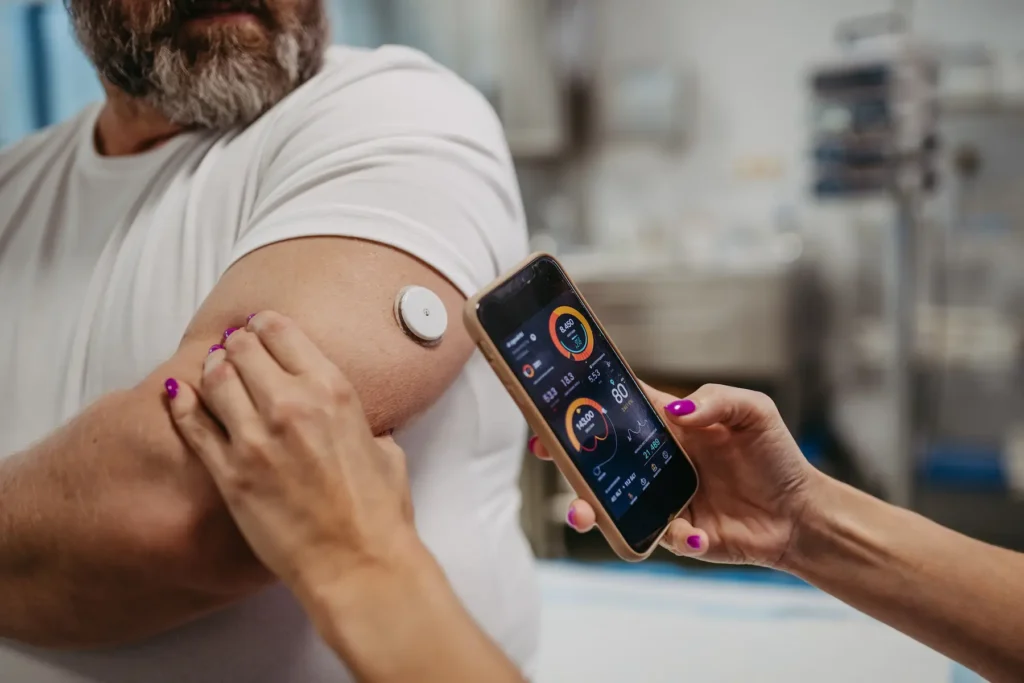Continuous Glucose Monitors (CGM) have revolutionized diabetes management, providing real-time insights into glucose levels and enhancing patient care. In recent years, their impact has extended beyond individual management to institutional settings, particularly in hospitals. This paradigm shift is reshaping the standard of care, offering unparalleled benefits in patient monitoring and treatment. Let’s delve deeper into how CGM is becoming the standard of care in hospital settings.
Understanding CGM in Hospital Settings
Traditionally, glucose monitoring in hospitals involved intermittent fingerstick measurements, often leading to delayed intervention and inadequate glycemic control. However, CGM offers a paradigm shift by providing continuous, real-time glucose data, empowering healthcare providers to make timely decisions. This technology comprises a sensor inserted subcutaneously, continuously measuring interstitial glucose levels and transmitting data to a receiver or smartphone.
Standard of Care in Patient Monitoring
One of the key advantages of CGM in hospitals is enhanced patient monitoring. CGM systems offer comprehensive data, including glucose trends, patterns, and fluctuations, enabling healthcare providers to identify hypoglycemic or hyperglycemic events promptly. This proactive approach allows for timely interventions, reducing the risk of complications and improving patient outcomes. Moreover, CGM facilitates personalized treatment adjustments, optimizing glycemic control for individual patients.
Streamlined Workflow
Integrating CGM into hospital systems streamlines workflow and enhances efficiency. With real-time data accessible through electronic health records (EHR) or dedicated platforms, healthcare providers can monitor multiple patients simultaneously, prioritize interventions, and allocate resources effectively. This seamless integration minimizes manual documentation, reduces errors, and fosters collaboration among multidisciplinary teams, ultimately improving patient care delivery.
Must Read Can CGMs Elevate Type 1 Diabetes Management Through Goal Setting?
Empowering Patients
CGM not only benefits healthcare providers but also empowers patients to actively participate in their care. In hospital settings, patients can visualize their glucose data in real-time, fostering awareness and self-management skills. Moreover, CGM alarms alert patients and caregivers about impending glucose fluctuations, facilitating proactive interventions and reducing reliance on healthcare providers for routine monitoring tasks.
Reducing Hypoglycemic Events
Hypoglycemia is a significant concern in hospitalized patients, predisposing them to adverse outcomes, including cardiovascular events and prolonged hospital stays. CGM plays a pivotal role in mitigating this risk by providing early detection of hypoglycemic events and facilitating prompt interventions. By implementing CGM-guided protocols, hospitals can minimize the incidence of hypoglycemia, improving patient safety and reducing healthcare costs associated with complications.
Optimizing Insulin Therapy
CGM enables precise insulin therapy adjustments based on real-time glucose data, thereby optimizing glycemic control while minimizing the risk of hypoglycemia. Hospitalized patients, particularly those with diabetes, often experience fluctuating glucose levels due to various factors such as illness, medications, and dietary changes. CGM-guided insulin therapy allows for individualized titration, ensuring optimal glucose management tailored to each patient’s needs.
Also, read more about How do Continuous Glucose Monitors guarantee top-notch diabetes care?
Facilitating Research and Quality Improvement
The adoption of CGM in hospital settings facilitates data collection for research purposes and quality improvement initiatives. Real-world data obtained from CGM systems can provide valuable insights into glycemic patterns, treatment outcomes, and healthcare practices. By analyzing this data, hospitals can identify areas for improvement, implement evidence-based protocols, and enhance the quality of care delivery.
Overcoming Challenges
Despite its numerous benefits, the widespread adoption of CGM in hospital settings may encounter challenges such as cost, technology integration, and staff training. Addressing these challenges requires collaborative efforts from healthcare institutions, policymakers, and technology developers to ensure equitable access and optimal utilization of CGM technology.
Conclusion
Continuous Glucose Monitors (CGM) are rapidly becoming the standard of care in hospital settings, revolutionizing glucose monitoring and diabetes management. By providing real-time data, streamlining workflow, empowering patients, and improving clinical outcomes, CGM is reshaping the landscape of hospital care delivery. As healthcare continues to evolve, integrating CGM technology represents a significant step towards enhancing patient safety, optimizing resource utilization, and improving overall quality of care.


